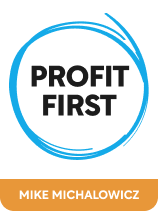

This article is an excerpt from the Shortform book guide to "Profit First" by Mike Michalowicz. Shortform has the world's best summaries and analyses of books you should be reading.
Like this article? Sign up for a free trial here .
Is your business financially healthy? How can you assess the financial health of a company?
In his book Profit First, business makeover specialist Mike Michalowicz explains how to assess the financial health of your company using the allocation percentage equation. He also provides a table of what a healthy business should look like in terms of allocation percentages for businesses of various sizes.
Here’s how to assess your company’s financial health, according to Michalowicz.
Assessing Your Business’s Current Financial Health
Michalowicz says it’s important to assess the financial health of a company. In this article, we’ll outline how you can find the percentage of your income you’re spending on each aspect of your business: profit, your personal salary, taxes, and expenses. Then, we’ll provide examples of what percentage of income a healthy business spends on each category. By comparing your current percentages with the example healthy percentages, you’ll be able to assess how financially healthy your business is.
(Shortform note: While this chapter of the guide provides a simple way to assess your business’s financial health, it isn’t as comprehensive as what a skilled financial advisor can offer. Michalowicz himself mentions that you should work with your accounting team throughout the book, so keep in mind that the principles in this chapter aren’t a substitute for that kind of support.)
Using the Allocation Percentage Equation
To assess your business’s financial health, Michalowicz outlines a step-by-step process to find what percentage of your income you currently allocate to each aspect of your business. If in any given step you aren’t sure about a number, just use your best guess—being “close enough” is fine here.
- Get your profit and loss statement, your most recent personal tax returns, and your balance sheet for the year’s end.
- Find your total income from the last 12 months. Label this value as I.
- Now, you’ll be adding up your material and subcontractor costs: Expenses that directly contribute to selling your products or services. This includes any materials, products, and labor that directly contribute to your product or service. Label these costs as (M).
- Subtract your material and subcontractor costs (M) from your total income (I) to find your adjusted revenue—label this value as R. Doing this clarifies the amount of revenue you earn that isn’t already being spent on necessary, fixed expenses, because these costs are both difficult to change and needed for every sale you make.
- Find how much money went into the following aspects of your business:
- Profit: Money from the last year that was left over after paying all expenses and taxes.
- Salary: Your salary from last year.
- Taxes: How much of your business’s money you used to pay for taxes last year. If you use your business’s money to pay your personal taxes, include that amount here.
- Expenses: All expenses from the last 12 months except for the subcontractor and material costs (M) you calculated in step three.
- You’ll now divide each of those values by your adjusted revenue (R) to find what percentage of your revenue you’re allocating to each. Put the values found in the previous steps into the following equation: AG =%. Calculate this equation using each of the above values as A: Profit, your salary, taxes, and expenses.
- Put your results into the table below, so you can quickly compare them to the example healthy percentages we’re now going to examine.
| A-value: | A = Profit | A = Your Salary | A = Taxes | A = Expenses |
| Percentage: |
(Shortform note: When explaining how to find your allocation percentages, Michalowicz uses his own terms separate from traditional accounting terminology. Specifically, what he calls materials and subcontractor costs (M) is known as cost of goods sold, adjusted revenue is known as gross profit, and what Michalowicz calls profit is known as net profit or net income.)
Your Allocation Percentages Versus Healthy Allocation Percentages
Now that you know your business’s current allocation percentages, you can compare them to Michalowicz’s in the table below for the appropriate adjusted revenue bracket. This table lists generally healthy allocation percentages for businesses of various sizes—the closer your percentages are to those in the table, the healthier your business is financially.
| Adjusted Revenue Bracket (R) | A = Profit Result | A = Your Salary Result | A = Taxes Result | A = Expenses Result |
| 0 – 250k | 5% | 50% | 15% | 30% |
| 250k – 500k | 10% | 35% | 15% | 40% |
| 500k – 1m | 15% | 20% | 15% | 50% |
| 1m – 5m | 10% | 10% | 15% | 65% |
| 5m – 10m | 15% | 5% | 15% | 65% |
| 10m – 50m | 20% | 0% | 15% | 65% |
(Shortform note: Michalowicz acknowledges that these numbers aren’t industry specific, but keep in mind that depending on your industry some of these numbers might not be realistic for your business. Percentages can range wildly from industry to industry—for example, the advertising industry has an average profit percentage of 3.1 percent, while the video game industry has an average profit percentage above 29 percent. Depending on your industry, then, Michalowicz’s percentages might be too conservative or too optimistic.)
Understanding the Healthy Percentages
These healthy percentages came from Michalowicz analyzing successful businesses in each revenue range and averaging their allocation percentages. The allocation percentages which are ultimately best for your business depend on additional factors like your industry, but the percentages listed above are a good place to start.
He explains that the healthy expense percentage grows with revenue, since a larger business requires more employees and more time spent organizing. In addition, as revenue grows, the healthy profit percentage increases while the salary percentage decreases. This is because your salary is based on what you’d pay an employee to do your work, and as your company grows you’ll be doing less employee work and more large-scale organizational work.

———End of Preview———
Like what you just read? Read the rest of the world's best book summary and analysis of Mike Michalowicz's "Profit First" at Shortform .
Here's what you'll find in our full Profit First summary :
- Why traditional business accounting methods don't work
- How to use the Profit First method to increase your business’s profitability and stability
- How to assess your business's current financial health






